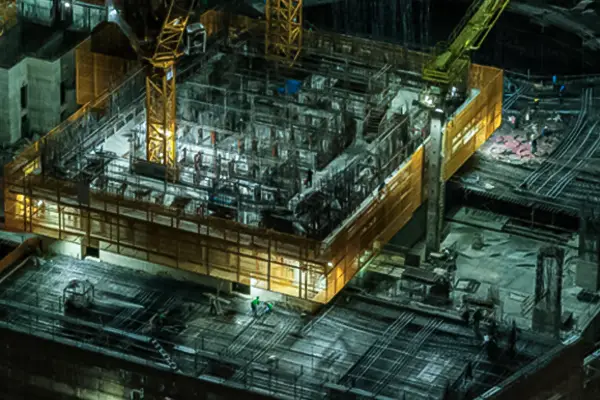
BIM Solutions for Managing and Executing Large Scale Projects
Construction industry continues to evolve, making management and execution of large-scale projects more and more complex. Traditional project management methods have failed to cater for and address the multifaceted challenges that come with such undertakings. However, the advent and rapid evolution of Building Information Modelling (BIM) is helping the construction industry solve issues associated with complex and large projects.
BIM for large projects has made project management more efficient, sustainable, and profitable. If you are looking to streamline processes, enhance collaboration, and ensure the successful delivery of your next big project, BIM is the solution you need
Why is BIM Essential for Large-Scale Projects?
Large-scale projects have unique challenges. Be it coordination among multiple stakeholders, managing a vast amount of data, adhering to compliance, or timely project delivery, BIM comes to your rescue by addressing these challenges head-on. Let’s dive a bit deeper to find out why BIM is essential for large-scale projects.
Enhanced Collaboration
BIM provides a central repository of information to everyone involved in the project and the same results in improved communication and collaboration. BIM empowers informed decision-making by providing real-time access to the most up-to-date information to architects, engineers, contractors, owners, and all other stakeholders.
This transparency and accessibility significantly reduce misunderstandings and errors among all disciplines. This way, teams are able to detect clashes and conflicts as early as in the design phase, leaving no room for unwanted and costly surprises later in the construction phase. Thus, BIM fosters a collaborative environment where all parties work towards a common goal. This is a luxury that you can’t enjoy with traditional approaches.
Improved Design and Visualization
Another luxury that you get with BIM is its capability of advanced design and visualization. Through software such as Revit, stakeholders can view detailed and precise 3D models which provide a realistic representation of the final structure. Stakeholders can use these models to contemplate various design options. Likewise, BIM empowers teams to conduct simulations to pick the most sustainable model and identify potential issues before the construction process commences.
Efficient Data Management
Managing large amounts of data associated with large-scale construction projects is a herculean task (and we literally mean it). BIM simplifies this whole process by consolidating all project data into a single, accessible platform. Such integration ensures that all stakeholders have access to the most recent information throughout the project lifecycle and the same is retrievable with ease. Thus, BIM for large projects reduces the risk of data loss, theft, and discrepancies immensely.
Do you have a new small project and want to make it cost-efficient and compliant? Then, you must read our guide on BIM for small projects by clicking here.
Cost and Time Savings
Let’s have a quick recap about how BIM for large projects a revolution is: it improves collaboration among all stakeholders, improves design accuracy, and streamlines data management. What does this mean for your business? Simple, it maximizes your profits by reducing project costs and timelines. The ability to identify and address issues early in the project lifecycle prevents costly rework and delays. Additionally, the use of BIM for scheduling (4D BIM) allows for better project planning and resource allocation, further optimizing efficiency.
Risk Management
Well, it needs no explanation why large-scale projects are riskier than small-sale projects. Numerous factors heavily influence the whole project and can potentially lead to delays and cost overruns. BIM for large projects helps you mitigate these risks by providing you with access to detailed and accurate information throughout the project lifecycle. For instance, BIM’s ability to perform effective clash detection helps your teams to identify and resolve conflicts before they become incurable headaches in the form of cost overruns and delays. This proactive risk management approach enhances project stability and predictability.
Key BIM Solutions for Large Scale Projects

To fully implement the benefits of BIM in large-scale projects, it’s crucial to implement the right solution. Below here, our experts have outlined key BIM tools and strategies that can help you manage and execute large projects more effectively.
1. 3D Modeling
At the core of BIM is the creation of detailed 3D models. As stated above, these models empower stakeholders to explore different design options, conduct simulations to pick the most sustainable model in terms of cost, safety, and time, and identify and resolve potential issues. Globally, both Autodesk Revit and Bentley System’s MicroStation are used for creating these models but BIM consultants in UK mostly prefer the former.
2. Clash Detection and Coordination
Did you know that BIM for large projects including clash detection and coordination results in cost savings ranging from 5% to 10% of the total project cost? Now, when we are talking about large-scale projects, it’s a lot of money, right?
BIM experts use various software and tools to identify and resolve conflicts in the design phase. However, two of the most popular tools among BIM consultants are Navisworks and Solibri Model Checker. These tools ensure that all building components fit together seamlessly. This preemptive approach minimizes rework and ensures smooth project execution.
When you hire DDC Solutions as your BIM consultants, you do not need to purchase expensive software licenses and set up costly IT eco-systems. Likewise, you do not need to hire additional teams to train your staff in contemporary BIM practices. DDC Solutions provides the necessary tools, expertise, and training, allowing you to fully benefit from advanced BIM capabilities without incurring these additional costs. Want to learn more? Book your free consultation and talk to a BIM expert.
3. 4D Scheduling
4D BIM for large projects involves the integration of time-related information into 3D models. Doing so provides your teams with a visual representation of the project schedule. This integration allows for better planning and coordination of construction activities. Software like Synchro and Vico Office are popular choices for 4D scheduling, helping project managers optimize timelines and resource allocation.
4. 5D Cost Estimation
Another area where large-scale construction projects benefit greatly from BIM is cost-related information or cost estimation. BIM experts link cost data to the 3D models to help stakeholders generate accurate cost estimates. The same technique is used for performing value engineering. For 5D cost estimation, the most popular tools are CostX and Innovaya.
5. Facility Management
What makes BIM so invaluable for large-scale construction projects is the fact that it benefits extend beyond the construction phase. When it comes to facility management, facility managers couldn’t be more thankful as BIM supports efficient maintenance and operation of the facility by providing a detailed digital record of the building. Tools like ARCHIBUS and FM are used for BIM-based facility management, ensuring that the building operates smoothly throughout its lifecycle.

